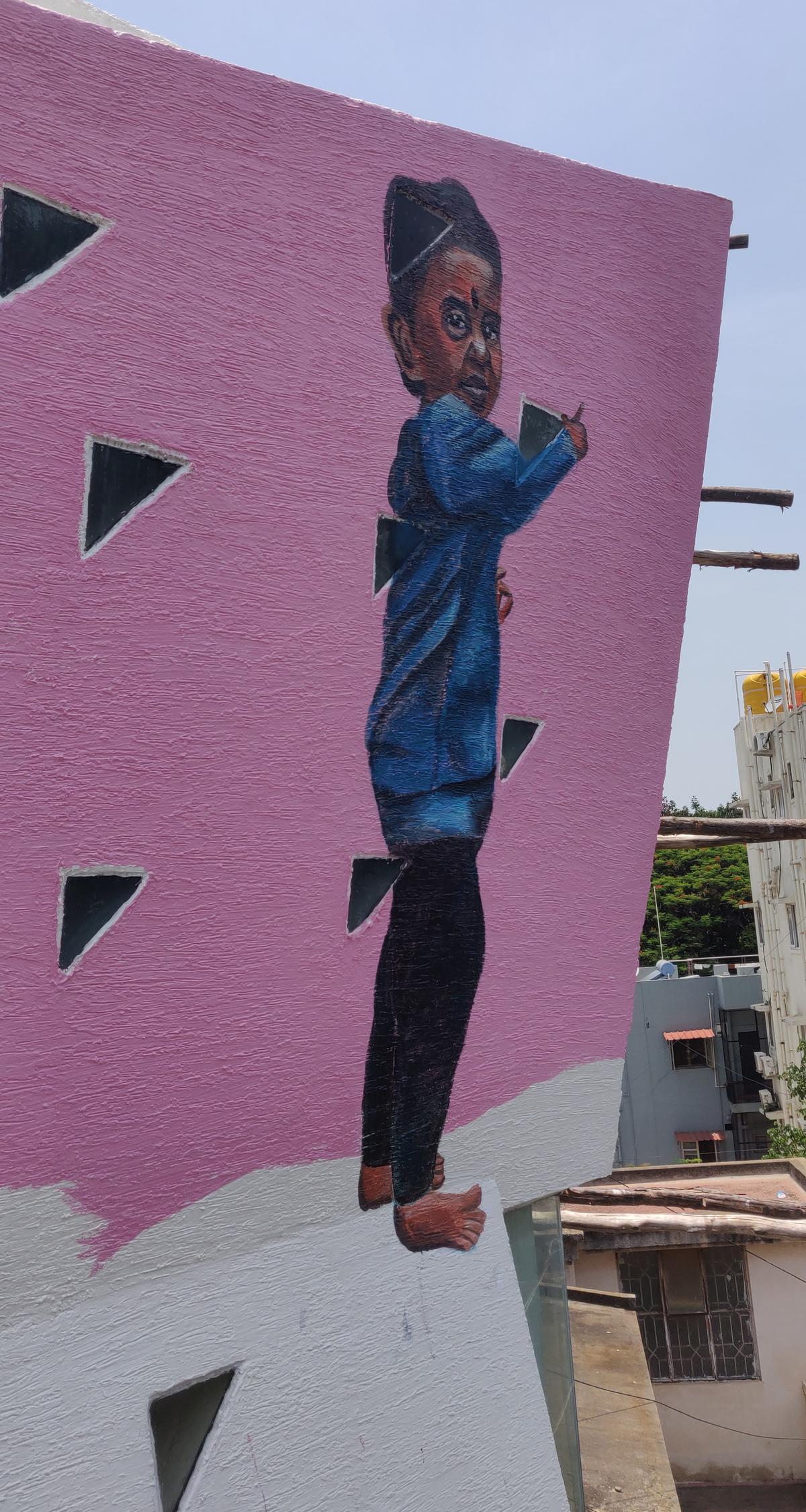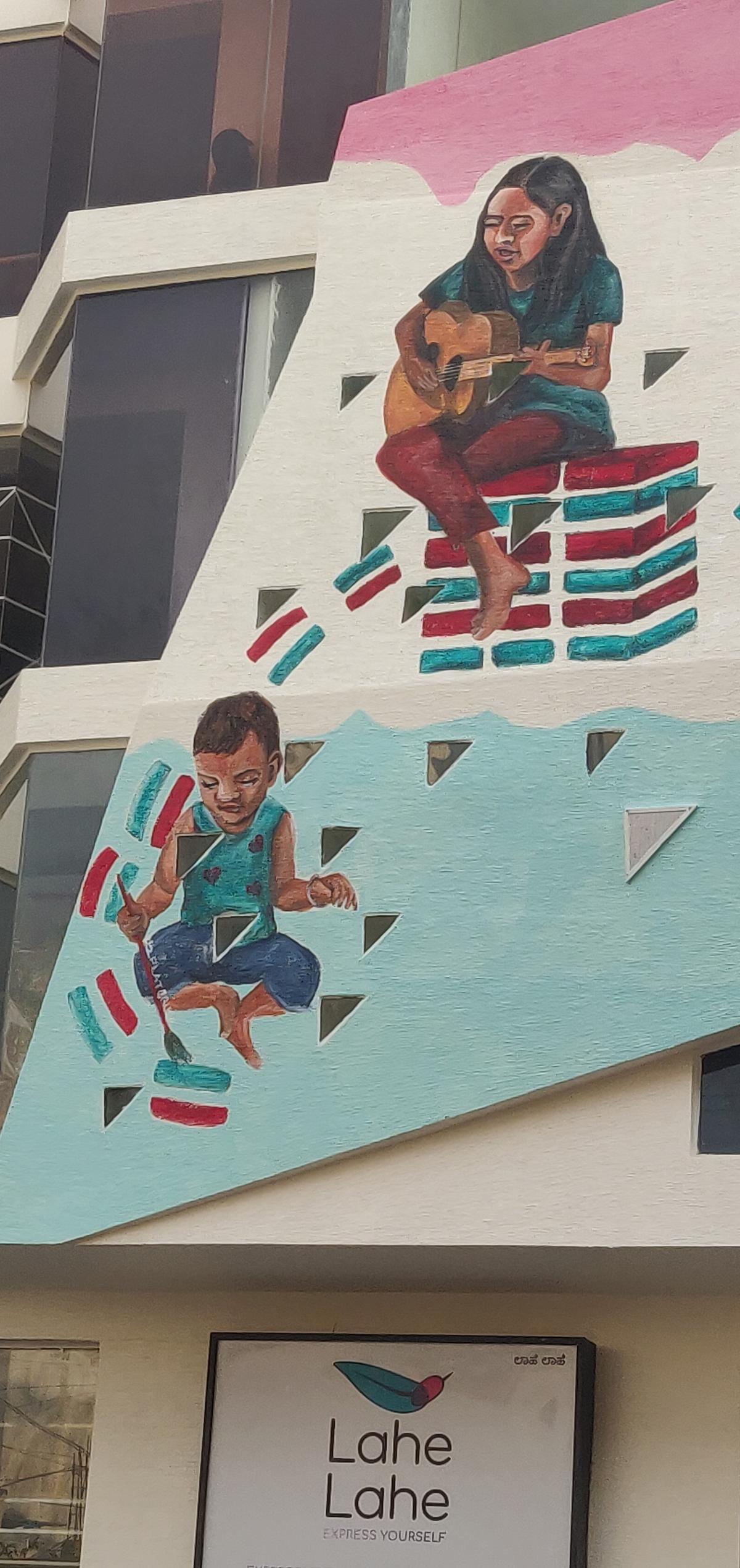The work by artist and muralist Girija Hariharan at the Bengaluru-based alternative art space Lahe Lahe.
| Photo Credit: special arrangement
“When you go to the roof of the building and look down, you can see two different Bengalurus,” says artist and muralist Girija Hariharan, talking about the inspiration for SamanA, her latest work, a 50×60 public wall mural, commissioned by the Bengaluru-based alternative art space Lahe Lahe.
On one side of the Lahe Lahe building, located in Kodihalli, one can see the swanky cityscape of Indiranagar, dotted with pubs, restaurants, and showrooms, while the other looks over sheets of tarpaulin, thatch, and corrugated metal, crowning the tiny homes and shops in this working-class neighbourhood.
“The wall overlooking all this is shaped like a skewed equal-to symbol,” she says, adding that it felt emblematic of the community in the neighbourhood as well.
“This wall and space presented an interesting conundrum of being famous among a certain class, but hardly familiar to the local people living there,” says Ms. Hariharan.
The mural consists of multiple portraits, including people from the local community, a performer from Lahe Lahe, and a dancer from Dharavi (the largest slum in Asia, located in Mumbai). It is an attempt to build a strong, more inclusive space through art, an idea championed by Lahe Lahe’s co-founders as well.
“A lot of people come here, but somehow, we haven’t yet managed to collaborate with the people around us,” agrees Mansee Shah Thard, who has co-founded the space, along with her husband, Nikhil, adding that she hopes that the mural can help start this conversation.

The work by artist and muralist Girija Hariharan at the Bengaluru-based alternative art space Lahe Lahe.
| Photo Credit:
special arrangement
Interacted with community to understand their thoughts
Ms. Hariharan began the project by visiting people in the community, trying to understand what they thought about the building.
“They told me that they had no idea what this building was for,” she recalls. “Some people even thought it was a dance bar,” says Hariharan, who firmly believes that her murals should lead to some form of action. “Rather than simply being an artivist, I want some social change to be fostered through my work,” she says.
She has decided to do so by choosing to bank most of her fees with Lahe Lahe, taking only the minimum required to sustain the project.
“The remaining money will be going back to the community,” she says, adding that it will be used to conduct workshops at Lahe Lahe, helmed by people from these communities. “I wanted them to come inside with power,” says Ms. Hariharan, who went around identifying talent from the community, including a hip-hop artist and women who can teach how to make garlands.

The work by artist and muralist Girija Hariharan at the Bengaluru-based alternative art space Lahe Lahe.
| Photo Credit:
special arrangement
Workshop by migrant worker
The first workshop, which will be held later this month, will be conducted by Moji Lal, a migrant from Uttar Pradesh who lives and runs a small nursery in the area. Talking about his workshop, Moji Lala says he will be focusing on teaching customers the right method to look after their plants, from watering to pesticide spraying, fertiliser application and managing sun exposure.
“Moji Lala is very free with his deep knowledge of plant maintenance that he generously provides to people who visit his nursery, irrespective of the money,” says Hariharan, pointing to the verdancy of his nursery, filled with succulents, houseplants and creepers. “He is so giving, just like his plants.”